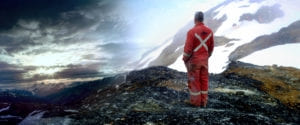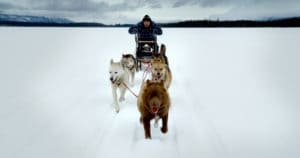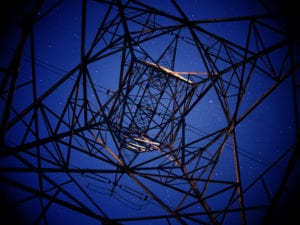In light of the recent wild fires in Fort McMurray, it is a good time to witness Koneline: our land beautiful, a documentary that sheds light on the lifestyle of northerners, and aims to understand rather than judge people who live in the world of oil and mining. The film is being shown in the Hot Doc’s festival on Saturday, May 7 at 3:15 p.m in the Hart House Theatre and is worth watching. As an environmentalist and western Canadian, it shook me to my core.
Koneline, directed by Canadian Nettie Wild, is a documentary about Northern B.C and the confluence of themes that interplay into the life and work of mines, the traditions of the Tahltan First Nations, and the life of the hunter. Wild shows the audience life in northern Canada, and purposefully refrains from taking a specific stance between the polarized opinions of miners and political activists.

“The north is a foreign land to many people in the south. If people can experience the land in a visceral way, it may mean they read the news in a different way,” said Wild. “There is dogmatic rhetoric flying from all sides. I thought I could bring art. I thought if I could bring a non-judgmental camera, I might be surprised and surprise the audience too. I think people are weary of being told what to think.”
Koneline films multiple perspectives of the miners who work the land, the Tahltan First Nations whose people are divided between working in the mine and protesting it, and experienced hunters who guide expeditions for tourists. Showing various peoples’ connections to the land could easily become an overwhelming experience for the viewer, but Wild uses breathtaking cinematic shots and aerial views that allow the audience to digest the various perspectives of life in the northern part of B.C before leading into the next scene.

Wild focuses on three main points of view in the film. The First Nations are a key player in Northern B.C and the audience meets Oscar Dennis, a member of the Tahltan who is trying to preserve the language and culture of his people. Some members of the Tahltan are actively fighting the development of the mines and they set up a barricade at the Red Chris mine during the course of filming to protest a tailings pond that was due to be built. Other Tahltan members work the mines so they can afford to feed their families. Hunters are also a key player in the film. It features Heidi Guntfrucht, one of the only female hunting guides in Canada, who is worried about the effect of the mines of wildlife migration in the area. The diamond miners also talk about their love of nature as a reason for working up north.
Wild began the project in 2012, and shot the footage for a year in 2014. During the course of her research and shooting, Wild began to see a common thread between all of her various film subjects. “I was moved,” said Wild. “We are all carrying luggage. We have onion layers and assumptions building up. All of those people have a real love of the land. There is a shared commonality.”
The name, Koneline, is a Tahltan word that has a two-fold meaning. In the Tahltan language, the pronoun “K” simultaneously means “I” and “the land” as one entity. Koneline itself means is beautiful. Therefore, the word means “I am beautiful” and “the land is beautiful” at the same time, demonstrating the deep connection this First Nations people hold to the land as a part of their individual identity.

The cinematography often shows the power lines that have been built in Northern B.C as contrasted to the vast wilderness in the array of aerial shots in Koneline. Wild attempts to show both the man-made technology and nature as essential parts of the northern landscape in her documentary. “There is a real elegance of engineering. It is an insane technological feat. All of the contradictions are there. There are these stark technological structures in the middle of pristine wilderness but they are also beautiful and surreal,” said Wild.
Koneline is a piece of cinematic art that pushes boundaries on what we perceive as compared to what we know. As an environmentalist, I can honestly say that this documentary affected me deeply by showing the value of considering all points of view rather than taking a specific stance that inadvertently narrows my judgment. The film will redefine your definition of being an environmentalist and is worth seeing at Hot Doc’s this year. With Fort McMurray in mind, refraining from judgment and being empathetic to the northern way of life may open your mind in a way you didn’t quite expect.
“We’re in a dangerous place when we have that polarized rhetoric. It is East vs. West and South vs. North. Everyone else is talking about it and the people of the north are living it. It is their jobs that are being won or lost, they are paying the premium on the horrible [packaged] food and their land that is being changed,” said Wild. “Canada is the north and we are defined by it. Let’s see what kind of assumptions we have and question them. We need to step back and say, isn’t that interesting. What does being non-judgmental look and sound like? Art can articulate that in a different way. You can feel that in your gut.”
